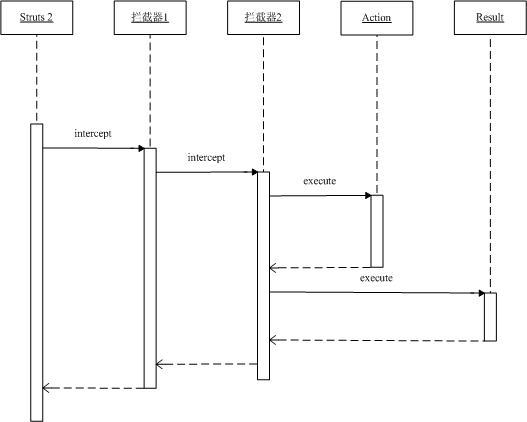- 浏览: 150560 次
- 性别:

- 来自: 佛山
-

最新评论
-
C393416691:
JNA—JNI终结者,java调用dll、ocx、so最简单的方法 -
C393416691:
JNA—JNI终结者,java调用dll、ocx、so最简单的方法 -
C393416691:
[flash=200,200][url][img][list] ...
JNA—JNI终结者,java调用dll、ocx、so最简单的方法 -
zhdycn:
感谢 LZ 的分享 都把核心 接口 都介绍了一下 一看你 ...
Spring3 MVC -
naily:
naily 写道很非常详细,对于了解spring mvc很有帮 ...
Spring3 MVC








 @Override
@Override

 }
} }
}


相关推荐
07 Struts 2的基石——拦截器(Interceptor) 08 在Struts 2中实现IoC 09 在Struts 2中实现文件上传 10 在Struts 2中实现CRUD 11 Struts 2中的OGNL 12 Struts 2的新表单标志的使用 13 Struts 2与AJAX
07 Struts 2的基石——拦截器(Interceptor) 08 在Struts 2中实现IoC 09 在Struts 2中实现文件上传 10 在Struts 2中实现CRUD 11 Struts 2中的OGNL 12 trus 2的新表单标志的使用 13 Struts 2与AJAX
Struts 2.0系列(MAX),pdf格式,全...Struts 2的基石——拦截器(Interceptor) 在Struts 2中实现IoC 在Struts 2中实现文件上传 在Struts 2中实现CRUD Struts 2中的OGNL Strus 2的新表单标志的使用 Struts 2与AJAX
07 Struts 2的基石——拦截器(Interceptor) 08 在Struts 2中实现IoC 09 在Struts 2中实现文件上传 10 在Struts 2中实现CRUD 11 Struts 2中的OGNL 12 trus 2的新表单标志的使用 13 Struts 2与AJAX Struts2中用...
拦截器不仅在Struts2中扮演着重要角色,更是整个框架灵活性与扩展性的基石。本文将深入探讨Struts2拦截器的基本概念、工作原理以及其实现机制,并结合实际应用场景来展示如何利用拦截器提高代码的复用性与可维护性。...
在Struts2框架中,Interceptor(拦截器)扮演着极其关键的角色,它不仅能够增强框架的灵活性,还能提供一系列强大的功能,包括但不限于权限控制、事务管理、数据验证等。本文将深入探讨Struts2 Interceptor的原理、...
Struts 2的基石——拦截器(Interceptor);在Struts 2_0中国际化(i18n)您的应用程序;在Struts 2_0中实现表单数据校验(Validation);Struts 2与AJAX;在Struts 2中实现IoC......
Strut2 源码API +TagAPI +示例 在Struts 2中实现文件上传 - Max On Java - BlogJava.files Struts 2的基石——拦截器(Interceptor) - Max On Java - BlogJava.htm Struts 2中的OGNL - Max On Java - BlogJava.htm
3. **拦截器库**:`struts2-convention-plugin.jar`和`struts2-interceptor-plugin.jar`提供了多种内置拦截器,如Params拦截器处理参数绑定,Validation拦截器负责验证,以及Tiles拦截器用于页面布局。 4. **结果...
拦截器是Struts2框架的基石,它允许开发者在动作执行前后插入自定义逻辑,提供了丰富的功能扩展和行为增强。 首先,我们来理解一下什么是拦截器。在Struts2中,拦截器是基于Java的动态AOP(面向切面编程)实现的。...
此外,`Interceptor`接口是拦截器的基石,它们在动作执行前后进行拦截,实现如权限检查、日志记录等功能。 Struts2中文帮助文档则针对这些API提供了更直观易懂的中文解释,涵盖了从基础知识到高级特性的各种主题。...
它提供了请求处理、拦截器链、插件架构等功能,是Struts2框架的基石。 2. **JSP和Struts2的集成**:在JSP页面中,我们可以通过`<s:form>`、`<s:textfield>`等Struts2标签库来创建表单和输入字段,实现与Action的...
学习Struts2,不仅要掌握基础的配置和Action设计,还要理解Interceptor(拦截器)的概念,它们可以插入到Action调用流程中,实现事务管理、权限控制等功能。另外,Struts2的国际化、异常处理、主题和模板等功能也是...
8. **javassist.jar**:这是一个代码生成库,Struts2使用它来实现运行时动态代理,创建拦截器。 9. **slf4j-api.jar** 和 **log4j.jar**:日志框架接口和实现,Struts2使用它们进行日志记录,方便调试和问题定位。 ...
1. **Struts2 Core**:这是Struts2框架的基础,包含了处理HTTP请求、动作调度、结果渲染、拦截器、标签库等核心组件。其中,`Action`是业务逻辑的载体,`Interceptor`用于扩展和拦截请求处理,而`Result`则负责控制...
Struts2框架则是基于Action和Result的MVC设计模式,它通过拦截器(Interceptor)实现了业务逻辑和视图的解耦。它的核心组件包括Action类、配置文件(struts.xml)、拦截器栈以及结果映射。Struts2允许开发者使用OGNL...
开发者可以通过阅读文档了解如何配置Struts2的XML文件(如struts.xml和web.xml),如何定义Action,如何使用拦截器,以及如何创建自定义结果类型等。 总之,Struts2开发包是一个完整的开发环境,它集成了处理请求、...
5. **.javassist.jar**:Javaassist库用于动态地修改类结构,Struts2使用它来处理Action类的动态代理,实现拦截器的功能。 6. **.commons-logging.jar**:这是一个通用的日志接口,提供日志抽象层,使得Struts2可以...